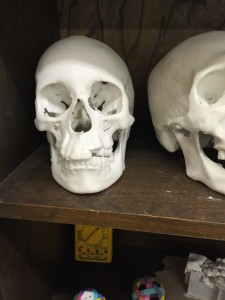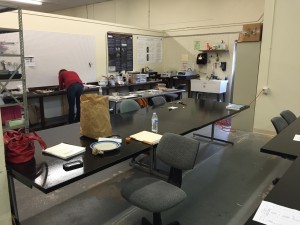Since we’re conducting our skeletal analyses at Texas State University, I thought it would be a good idea to talk about the amazing laboratories we’re working in this week. At Texas State there are three laboratories in the Forensic Anthropology Center.
Forensic Anthropology Research Facility (FARF)
FARF is an outdoor decomposition research facility that consists of about 26 acres of land. Students and other forensic science researchers conduct research projects here using donated bodies to learn more about rates of decomposition and methods to estimate time since death. Providing time since death to law enforcement is an important aspect of the job of a forensic anthropologist and can provide valuable information in a criminal investigation. When I first walked into FARF, I was shown a small scatter of bones. Dr. Spradley explained that vulture scavenging is common in South Texas. A group of vultures can reduce a body to bone in several hours and then scatter the bones. Several researchers have conducted studies here on this topic. When you walk around this facility, you are likely to see multiple cages of different sizes. Each cage contains a body and is part of a research project. The cages are mostly used to keep out scavenging animals, but different cages serve different purposes and aid in someone’s research. For example, the cages covered in green mesh were set up to keep bugs and insects out. There are also weather stations in FARF that record temperature, precipitation, and humidity levels, so that researchers can see how these variables impact decomposition. FARF is an excellent resource for students and researchers to use.
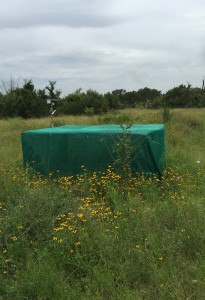
Osteology Research and Processing Laboratory (ORPL)
After FARF, donated bodies go to ORPL to get processed. In this lab the donated bodies are decontaminated and the soft tissues are removed from the bones, so that a skeletal analysis can be conducted. This facility has a processing suite with giant kettles for processing bodies, a morgue freezer to store bodies, a digitizer, and a portable x-ray machine. Most forensic anthropology laboratories do not have a separate building just for processing, so we were all amazed when we saw this dedicated space. This lab is also where the Operation Identification (unidentified migrants) analyses take place. We spent most of our time here doing skeletal analyses, while other teams worked on processing remains or on documenting personal artifacts that were found with the migrant remains.
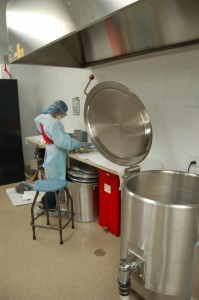
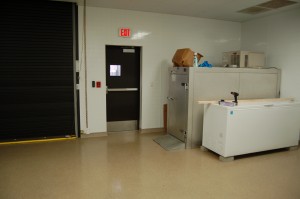
Grady Early Forensic Anthropology Laboratory (GEFARL)
At GEFARL, osteological research and histology analyses are conducted by students and faculty. The donated skeletal collection is also curated here. GEFARL is full of fancy toys (high tech scientific equipment) including a micro-CT scanner, a white light laser scanner, and a 3D printer. We were so jealous when we walked into this laboratory. The equipment they have here is amazing and great tools for research. We were shown a few skulls that they printed with their 3D printer. They looked pretty close to the real thing, but felt heavy. The micro-CT scanner may have the word micro it’s the name, but this machine is huge. The Micro-CT scanner and white light laser scanner both create 3D images that can be manipulated and stored on a computer for later research.
